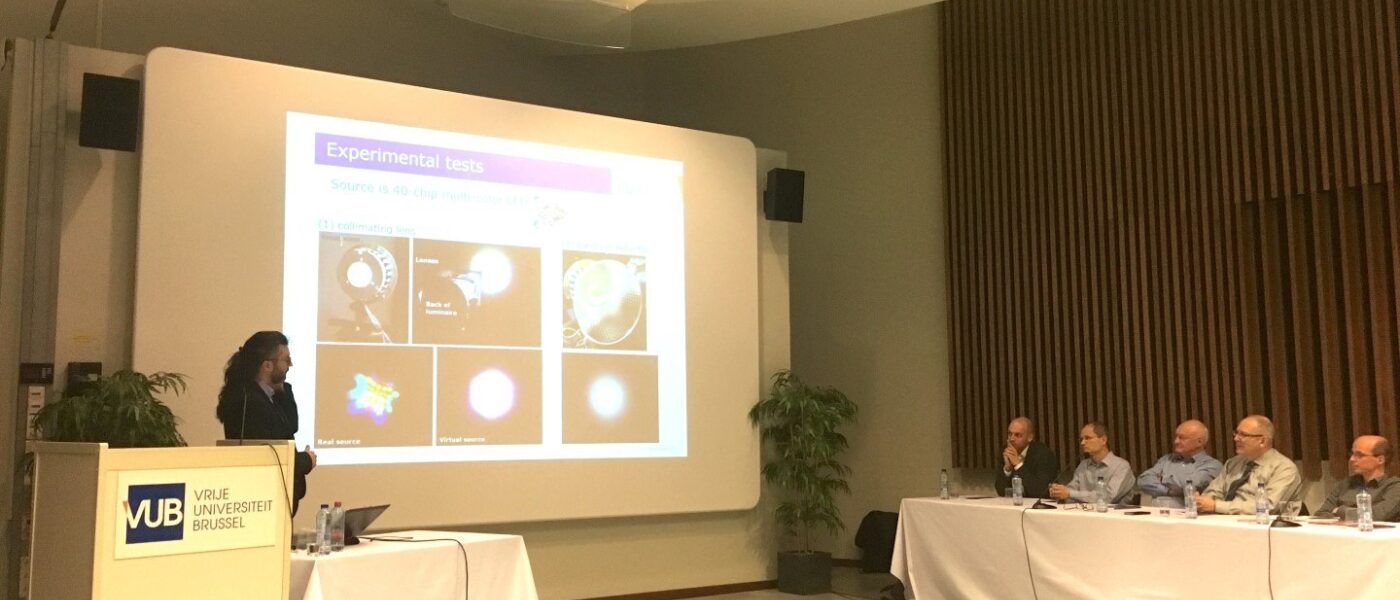B-PHOT welcomes S. Sorgato Postdoc researcher after his defense on illumination Optics

In the domain of Illumination Optics and Optical design controlling the propagation of light is key. Game-changing features are compact size, highly efficient light collection at low production costs. For his PhD research, Simone combines the Edge Ray Principle of Nonimaging Optics with freeform micro-lenses which results in a substantial 70% decrease in the volume of a Shell-Mixer optic, and in the efficiency rising up to 93%, while keeping the optical performance intact.
Simone Sorgato successfully presented his doctoral research entitled ‘Novel optical solutions and design methods for advanced illumination with extended sources’.
The Solid State Lighting market shows these days a trend to the usage of high flux packages with high efficacy and Color Rendering Index, realized by means of multiple color chips and phosphors. The resulting white LEDs can be several centimeters in size. When it comes to the design of optics for such sources, the demand for compact and efficient luminaires implies that well-known design methods employing a point-source approximation are often not applicable. Thus, today’s research in illumination is strongly focused on design techniques for extended emitters.
This PhD thesis focuses on new optical design methods for modern illumination applications in which the spatial extent and the non-uniformity of LEDs play an integral role. Advanced concepts from Nonimaging Optics and Freeform Optics are applied to the design of a compact “Shell-Mixer” device, which performs color mixing of the light emitted by extended inhomogeneous sources. This freeform Shell-Mixer removes defects resulting from non-uniformity of modern LEDs, allowing uniform and homogeneous light beams suited for high quality and comfortable illumination.
For the first time, a Simultaneous Multiple Surface (SMS) optic comprising three freeform surfaces is presented, which allows to simultaneously control three freeform wavefronts. This innovation has an evident theoretical importance, being the first example of such a device; but the advantages it brings have an immediate impact on practical applications in which accurate generation of complicated illumination patterns is required, like automotive lighting.
Finally, a novel method for tailoring wavefronts which generate prescribed intensity distributions is proposed. This technique is employed in a flexible and general wavefront-matching procedure to design optics for prescribed intensity patterns with extended sources, paving the way for a full solution to this fundamental illumination problem.
He defended his work in front of the jury, his colleagues, friends and family from Italy joined the defence to support him.

